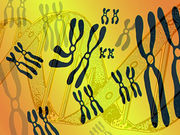Study findings provide cancer risk patterns based on BRCA status using prospective data
WEDNESDAY, June 21, 2017 (HealthDay News) — Breast cancer risk peaks around the 40s for BRCA1 mutation carriers and around the 50s for BRCA2 carriers, with family history and mutation location significant factors in determining individual risk, according to a report published in the June 20 issue of the Journal of the American Medical Association.
Researchers tracked 9,856 women with BRCA1 and BRCA2 mutations. These included 5,046 cancer-free women and 4,810 women previously diagnosed with breast or ovarian cancer. During an average follow-up period of five years, 426 of the women were diagnosed with breast cancer, 109 with ovarian cancer, and 245 with breast cancer in the second breast.
The researchers found that the increase in breast cancer risk rose quickly in early adulthood and then plateaued, typically for the rest of a woman’s life. For women with a BRCA1 mutation, the plateau occurred around ages 31 to 40. For those with BRCA2 mutations, the plateau occurred about five to 10 years later. The researchers concluded that 72 percent of BRCA1 carriers will develop breast cancer by age 80, and 44 percent will develop ovarian cancer by that age. For BRCA2 carriers, 69 percent of women will develop breast cancer by age 80 and 17 percent of women will develop ovarian cancer by the same age.
The team also found that breast cancer risk increased with increasing number of first- and second-degree relatives diagnosed as having breast cancer. Risk was also higher if mutations were located outside versus within the regions bounded by positions c.2282-c.4071 in BRCA1 and c.2831-c.6401 in BRCA2. The authors conclude that these findings “demonstrate the potential importance of family history and mutation location in risk assessment.”
Copyright © 2017 HealthDay. All rights reserved.








